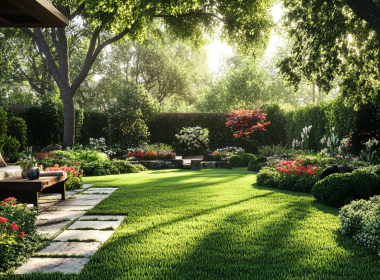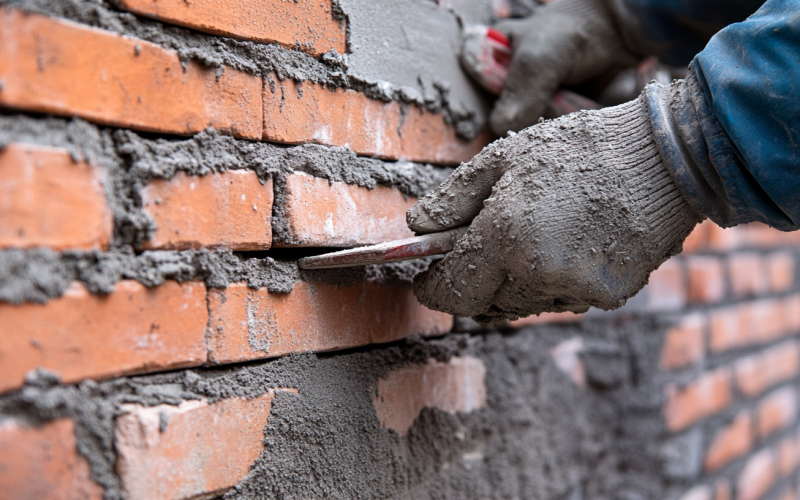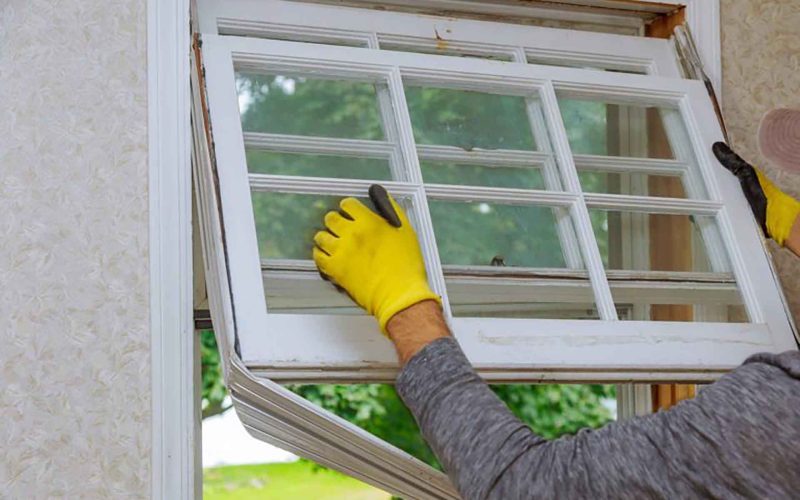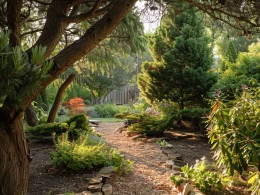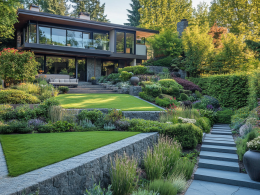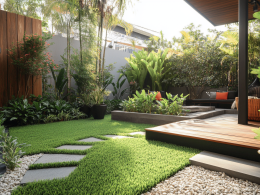Learn to craft a stunning, low-maintenance stone landscape with minimal upkeep. Discover durable design tips for an effortless outdoor space.
Creating a low-maintenance landscape can save you time, effort, and money while contributing to a more sustainable environment. Stone landscaping is an excellent choice for minimizing upkeep while achieving a stylish and functional outdoor space. If you’re exploring stone landscaping ideas to reduce maintenance, you’re in the right place.
Let’s explore what low-maintenance landscaping entails, how to make your landscape easy to manage, and share creative stone landscaping ideas and tips for maintaining your stone landscape.
What is Low Maintenance Landscaping?
Low-maintenance landscaping involves designing and implementing garden and yard features that require minimal upkeep to maintain appearance and functionality.
This approach focuses on reducing the time, effort, and resources needed for routine care by selecting durable materials, incorporating easy-to-care-for plants, and using efficient design techniques.
By prioritizing simplicity and durability, low-maintenance landscaping allows homeowners to enjoy a beautiful outdoor space without the frequent watering, weeding, and pruning, ultimately resulting in a more manageable and cost-effective landscape.
Benefits of Low-Maintenance Landscaping
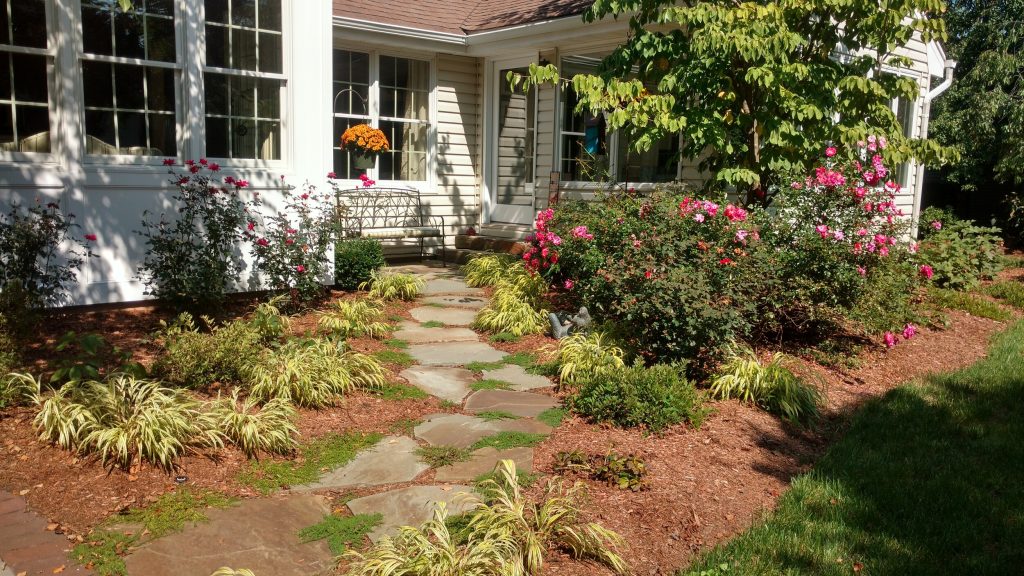
Low-maintenance landscaping offers significant advantages by reducing the time and cost of garden upkeep. It also promotes sustainability through eco-friendly materials and practices, creating a healthier environment.
Reduced Upkeep
One of the primary benefits of low-maintenance landscaping is reducing routine care tasks. By choosing drought-tolerant plants and incorporating materials that do not require frequent replacement or adjustment, homeowners can significantly reduce activities such as watering, weeding, and trimming.
Simplified designs with fewer plant varieties and hardscaping elements reduce the overall maintenance workload, allowing more time to enjoy the outdoor space rather than work on it.
Cost Savings
Another advantage of low-maintenance landscaping is the potential for cost savings. Reduced watering needs lead to lower water bills, as less frequent irrigation is required.
Additionally, fewer maintenance tasks translate to fewer visits from professional landscapers or gardeners, which can lead to substantial savings over time. By investing in low-maintenance materials and designs, homeowners can achieve a beautiful landscape while keeping ongoing costs to a minimum.
Sustainability
Low-maintenance landscaping also promotes environmental sustainability. By opting for eco-friendly materials and native plants, homeowners can reduce their environmental footprint.
Native plants are well-adapted to local conditions and require less water and fewer chemical treatments than non-native species. Sustainable materials, such as permeable pavers and recycled stone, contribute to a more eco-friendly landscape by minimizing the use of resources and reducing waste.
This approach supports local ecosystems and helps maintain a healthier environment.
How to Make Your Landscaping Low Maintenance
Selecting durable materials, using efficient design techniques, and incorporating automation can greatly reduce maintenance efforts. Stone is a top choice for its longevity and minimal upkeep needs.
Selecting the Right Materials
Choosing the right materials is fundamental to designing a low-maintenance landscape. The materials you select directly impact the level of upkeep required, the longevity of your landscape, and the overall aesthetic appeal.
Stone is an exceptional choice among various options due to its inherent durability, minimal upkeep requirements, and versatility.
Design Principles
Designing a low-maintenance landscape involves planning and implementing strategies to reduce the need for ongoing care. Avoid overcrowding plants and ensure adequate space between features for easy maintenance and access. Position stone features in areas that receive minimal wear and tear or where they can serve multiple functions, such as creating pathways and retaining walls.
Incorporating Automation
Incorporating automated systems can further reduce maintenance efforts. Drip irrigation and sprinkler systems can be set on timers to ensure plants receive consistent watering without manual effort. Solar-powered or timer-controlled outdoor lights reduce the need for manual adjustments and wiring.
Ideas for Low-Maintenance Stone Landscapes

Creating a low-maintenance stone landscape can greatly enhance your outdoor space while minimizing the time and effort needed for upkeep. Here are several ideas to achieve a beautiful and functional stone landscape with minimal maintenance:
1. Stone Pathways
Stone pathways are practical and add a touch of elegance to your landscape. Choose durable materials like flagstone or pavers to create a durable walkway that withstands heavy foot traffic and weather conditions.
Using stones with irregular shapes and sizes can achieve a natural, rustic look while minimizing gaps where weeds could grow. Proper installation with a compacted base and edging helps prevent shifting and ensures the path remains in good condition with minimal maintenance.
2. Gravel Driveways
Gravel driveways are a low-maintenance alternative to traditional asphalt or concrete. They provide a porous surface that allows rainwater to seep into the ground, reducing runoff and erosion. Gravel is easy to install and maintain, requiring occasional replenishing and raking to keep it level.
Opt for larger gravel sizes or crushed stones to minimize weed growth and maintenance, and use landscape fabric underneath to prevent weeds from emerging.
3. Stone-Retaining Walls
Stone retaining walls are both functional and decorative, offering support to prevent soil erosion and creating level planting areas. Constructed from natural stone or manufactured blocks, these walls require minimal upkeep once installed.
They add a structured element to your landscape and can be used to create terraced garden beds or outdoor seating areas. Proper drainage behind the wall helps prevent water buildup and prolongs the structure’s lifespan.
4. Dry Creek Beds
Dry creek beds are an attractive and practical solution for managing water flow and reducing erosion. Using a combination of large stones and smaller gravel, you can create a natural-looking watercourse that channels rainwater away from problem areas without needing ongoing maintenance. Dry creek beds can complement the surrounding landscape and help control runoff while adding visual interest.
5. Stone Mulch Beds
Using stone as mulch in garden beds offers a stylish, low-maintenance alternative to traditional organic mulch. Stone mulch, such as pea gravel or decorative river rock, suppresses weed growth, conserves soil moisture, and reduces the need for frequent reapplication. It also adds a clean, finished look to your garden beds and requires occasional cleaning to remove debris.
6. Patios and Outdoor Living Spaces
Designing patios and outdoor living areas with stone materials creates durable and low-maintenance spaces for relaxation and entertainment.
Use materials like travertine, slate, or bluestone to build a stylish patio that withstands the elements and heavy use. Incorporate built-in seating, fire pits, or outdoor kitchens with stone to enhance functionality while reducing the need for additional furniture and upkeep.
7. Stone Edging
Stone edging effectively defines garden beds, pathways, and lawns while reducing the need for regular trimming and maintenance.
Edging made from cobblestones, bricks, or natural stone creates clean lines and prevents grass or mulch from creeping into flower beds or pathways. This helps keep your landscape tidy and simplifies lawn care by minimizing the area that needs to be mowed or edged.
Tips to Maintain Your Stone Landscape
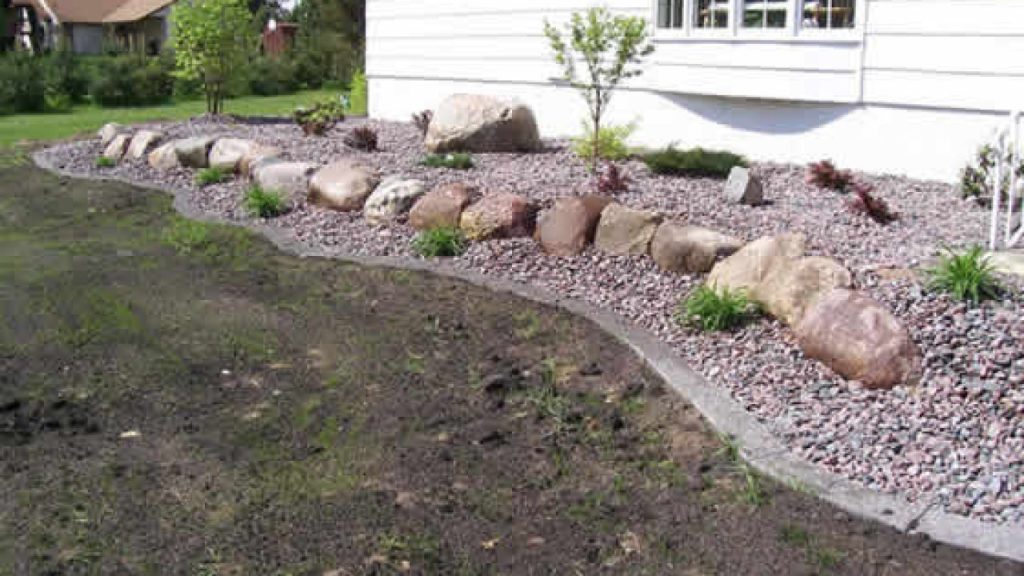
Regular cleaning, effective weed control, and routine inspections are key to maintaining your stone landscape. Implementing these practices will help preserve the appearance and functionality of your stone features with minimal effort.
Regular Cleaning
Keeping stone surfaces clean is essential to maintaining their appearance and functionality. Regularly sweep away debris to prevent staining and moss growth. Occasionally, a power washer removes stubborn stains and grime from stone surfaces.
Weed Control
Weeds can be a common issue in stone landscapes if not properly managed. Install it under gravel or crushed stone to prevent weed growth. Use environmentally friendly herbicides to manage weed issues without harming surrounding plants.
Routine Inspections
Regular inspections help identify and address potential issues before they become major problems. Look for cracks or damage in stone features and repair them promptly to prevent further damage. Ensure that drainage systems are functioning correctly to avoid water damage and erosion.
Create a Stunning Outdoor Area!
Designing a low-maintenance stone landscape can greatly enhance your outdoor space while minimizing the time and effort required for upkeep. You can create a beautiful, functional landscape with minimal maintenance by selecting durable materials, applying efficient design principles, and incorporating automation.
Exploring stone landscaping ideas and following these tips will help you achieve a stunning outdoor area that aligns with your lifestyle and maintenance preferences. Remember, the key to a successful low-maintenance landscape is careful planning and regular upkeep to ensure long-term enjoyment and beauty.




